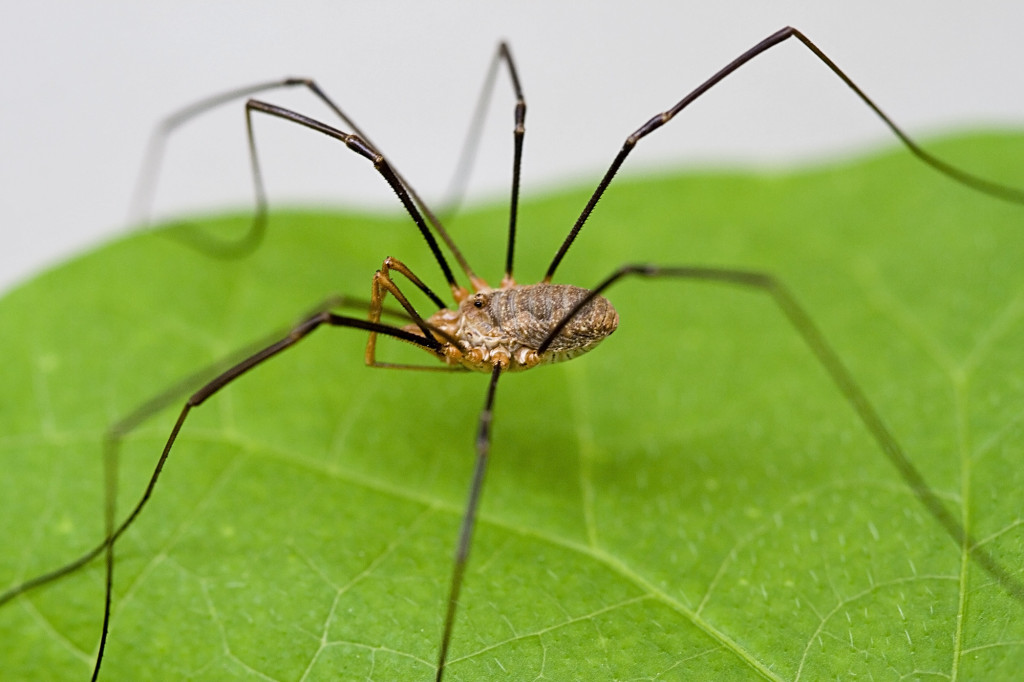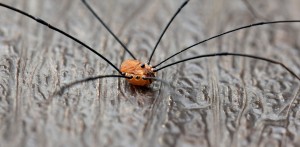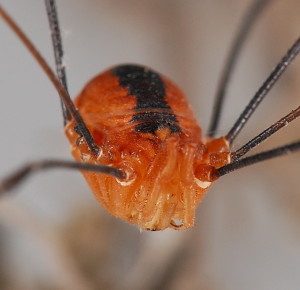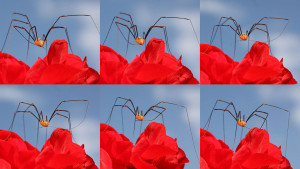Daddy Long-Legs Facts and Fiction

An Introduction to Daddy Long Legs
As a kid I remember shrieking and being chased around the playground as little boys ran after the girls and tossed daddy long-legs us. Of course we all just knew they were man-eating spiders and we'd be bitten. Invariably though, the poor "spider" would lose a leg or two, fall quite short, and we'd race off to safety. Since then I've come to quite like daddy long legs and the members of their family, mostly because I think they get a pretty bad rap.

Daddy long legs are arthropods (which means "joint foot"), but they are not spiders. Even though superficially they look like spiders, and move like spiders, they aren't. Their family tree gets moved around a lot, because no one is quite sure where they belong, but most think they're more closely related to mites or scorpions (sans sting or venom). Sometimes they are called granddaddy long-legs, harvest spiders, or harvestmen. Daddy long-legs are found on every continent except Antarctica, and it's thought that there are nearly 6,500 species, 46 families, and 4 suborders world wide! That's a lot of species for a group that is commonly misidentified.
FICTION: DADDY LONG LEGS ARE SPIDERS
FACT: Daddy long legs are not spiders, they lack the ability to spin silk (spinnerets) and they do not have the body shape of spiders. If you remember from previous posts, spiders have two body parts, a head and a cephalothorax (fused abdomen and middle). Daddy long-legs have one oval shaped fused body-head-abdomen, also called a cephalothrox.

They do have eight legs, like spiders do, but these legs are a bit different too. In the Eastern harvestman their second pair of legs are longest, and they are specialized for smell-touching. Most species have a stinky-gland at the base of this second set of legs for driving off potential predators (the awesome "sciency" name for this stinky gland is "ozopore"...which really just sounds like ooze-pore and makes it easy to remember).
Almost all species of daddy long legs can "drop" a leg, much like a lizard losing its tail, it a form of self-amputation. While a great technique for predators that are easily distracted by the leg(s), which continues to twitch, it's not so great for the daddy long-legs because he can't ever grow them back. This is why you shouldn't pick them up by the legs, you can end up permanently amputating their appendages (I'm feeling a bit of childhood guilt here).

Another feature that distinguishes daddy long-legs from spiders is the fact that they have a single pair of eyes that are located on top of a stalk near the middle of their head region. These stalk-eyes let them see all around them. Recently a fossil harvestman was found that was over 305 million-years-old, and it's eyes are giving scientists a clue as to arthropod evolution! Scientists published their findings in the journal of Current Biology, click here to read more. The fossil revealed that the harvestman's ancestor had two pairs of eyes, instead of one.
FICTION: DADDY LONG-LEGS ARE ONE OF THE MOST POISONOUS SPIDERS IN THE WORLD
FACT: First, they're not spiders, and second, daddy long-legs do not have fangs and none of them make venom. Their mouth parts are more like that of a crab or scorpion, called a stomotheca (stow-moe-thee-ca). They also have chelicerae (chee-lis-a-ray), which are a type of claw that they use for holding and grasping food. This is what they look like:

These chelicerae are not strong enough to break human skin. Interestingly, unlike spiders that can only eat liquified food (this will be another blog post), harvestmen can eat small pieces of food that they tear with their tiny claws/chelicerae.

Daddy long-legs are very beneficial to a house or home. They are omnivores and eat insects, other spiders, pests such as aphids, dead insects, fungus, bird droppings, worms, and snails. They are great to have in a house or garden. Mostly they are nocturnal, and love dark places like basements, cellars, garages, and wood piles.
Daddy long legs are are fairly tolerant of others of their species, which is why you may find them in groups. In the Eastern US they tend to congregate in groups in the Fall, which is why they are often called harvestmen. Some of these groups can be quite large, ranging up to 100 individuals. No-one is sure why they congregate. The working theories are that it's for protection, to help regulate humidity and temperature, and/or because a large group can secrete a lot of smelly stuff from their ozopores and drive off predators. They do not damage any surface or area that they cluster on.
Despite the fact that they're harmless, a big gathering of them can be quite startling. Here's a video of one such gathering:
Daddy long-legs only live for about a year, and their life cycle is fairly quick. Most reproduce sexually, though there are a few deviants from this. The female lays her eggs in leaf litter, wood, and under stones. As they grow they molt, like other arthropods, and go through about eight growth stages until they reach adulthood.
Regardless of the fact that daddy long-legs look like spiders (and yes, there is certainly a creepy factor), they are quite harmless and super beneficial to your house and home. If you see them, don't pick them up by the legs (they need all those appendages and they don't grow back), and try to let them go on their way. They are beneficial bug eaters and friends. They are quite clean creatures that want nothing more than to help keep your house clean and free of pests. Don't believe me? Here's a photo series of one cleaning its legs!

Want to help your kids get over their fear of daddy long legs? Check out this great book by the Smithsonian:


